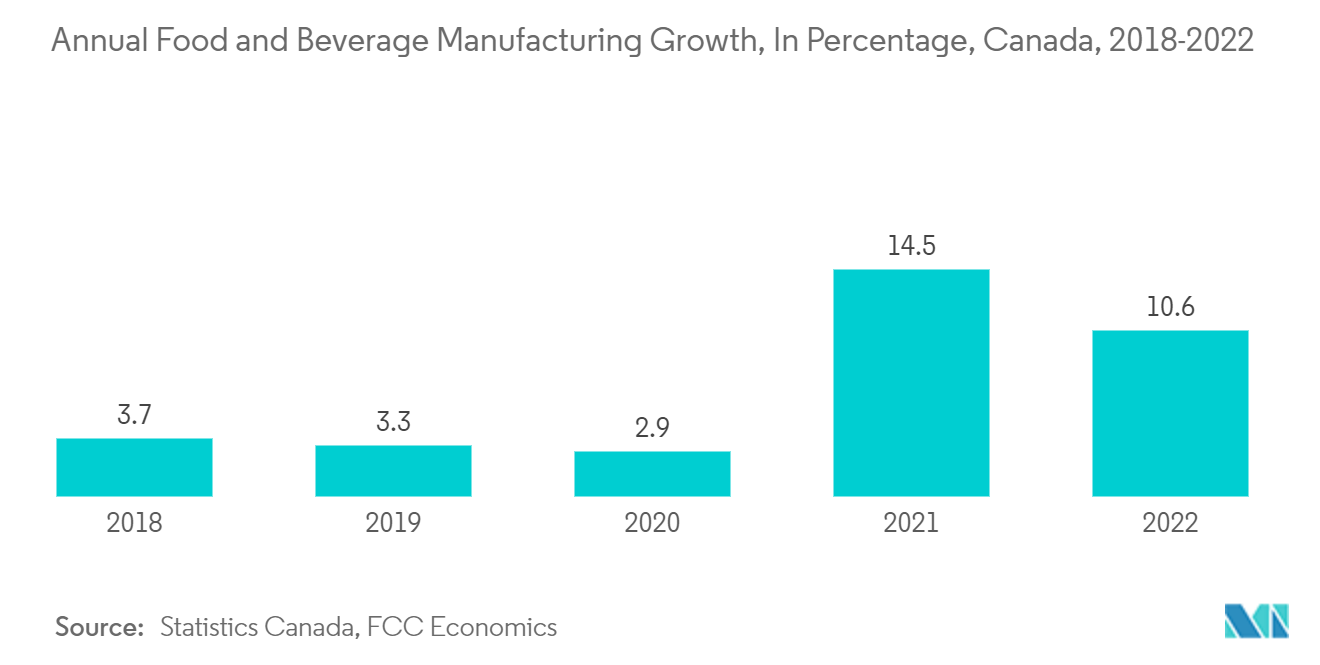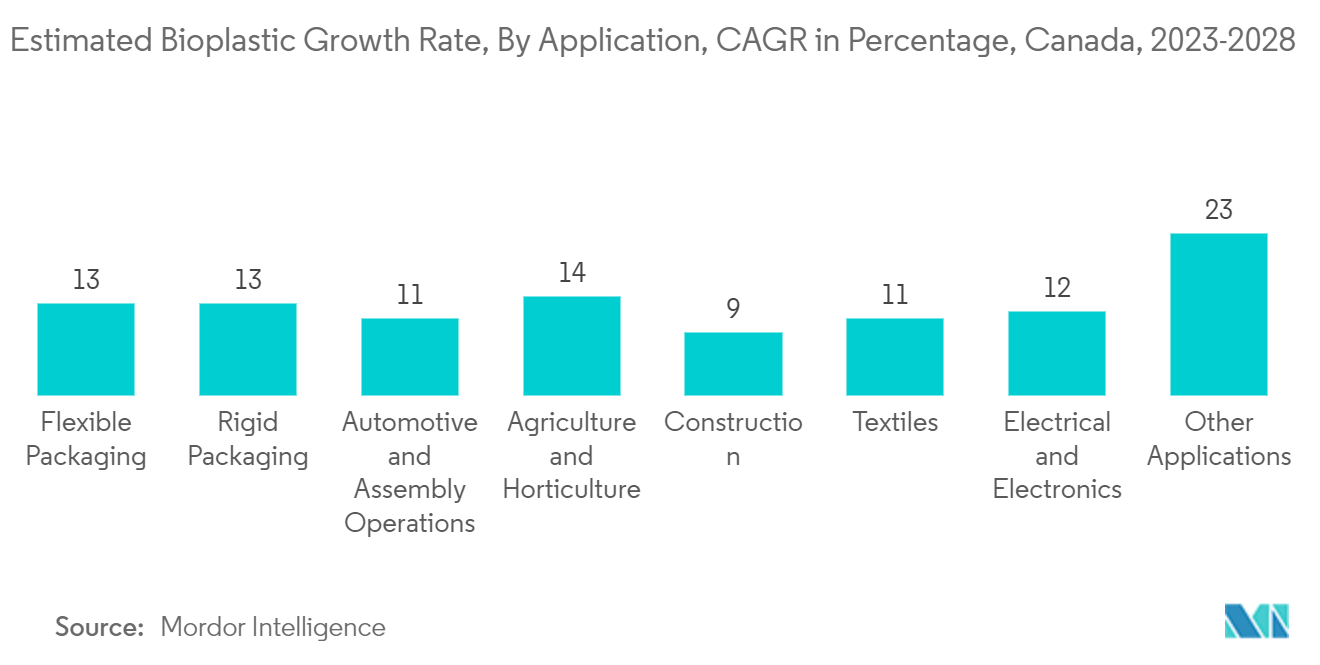Market Trends of Canada Bioplastics Industry
Flexible Packaging Industry to Dominate the Market
- Bioplastics are used in flexible packaging, as they are not harmful to nature, and few are easily degradable as well.
- They are used in packaging films for food items, medicines, beverage bottles, packaging films, and packaging of non-food products, such as napkins and tissues, toilet paper, nappies, sanitary towels, cardboard, and coat paper for food wrapping paper, and coated cardboard to make cups and plates. Moreover, they are used in flexible and loose-fill packaging.
- The consumption of bioplastics is increasing in making plastic bags, as they are nature-friendly, and for organic waste collection bags, which are majorly used in hospitals, hotels and restaurants, commercial and retail outlets, and houses.
- The Government of Canada encourages measures to produce alternatives to plastic to reduce waste. Under this initiative, the government announced a USD 1 million investment to BOSK Bioproducts Inc. as part of the second phase of the Bioplastics Challenge in April 2021. Courtesy of the challenge, the government aims to help small businesses reduce pollution by turning forest-based residue into sustainable plastic materials.
- As for the demand drivers for flexible packaging, the food packaging and e-commerce industries have grown tremendously post the onset of COVID-19.
- According to the FCC Food and Beverage Report 2023, meat product manufacturing sales increased over 9% year-on-year in 2022, largely due to stronger domestic sales, which were up by 12%, led by food service growth.
- The food service industry is an important market for baked goods, and 2022 only reinforced this industry feature. Restaurant sales increased by 41% in 2022 and fast-food sales by 14%. Bakery and tortilla manufacturing sales increased 18% year-on-year to USD 16.3 billion in 2022. Cookie and cracker sales increased 31% year-on-year, while bread and bakery product sales increased 16%.
- As for e-commerce, post the pandemic, electronics is the leading product category amongst Canadians to purchase online. Fashion is the second largest product category purchased online in Canada. Both these categories combined make up more than 50% of the e-commerce sales in Canada.
- In 2022, retail e-commerce in Canada generated over USD 52 billion in revenue. According to Statistics Canada, the annual retail sales percentage through e-commerce has been increasing across all categories in Canada, with Electronics (31%) and Clothing(19%) leading the way in 2022. Other categories like furniture and sporting goods have also recorded double-digit shares.
- With the food and beverage industry growing at a rapid pace and people adopting and preferring online shopping, starting from FMCG products and food to medicines, electronics, and others, the demand for flexible packaging in e-commerce is expected to offer several growth opportunities in the country over the coming years.

Bio Polyethylene Terephthalate (PET) is amongst the leading Product Types
- Bio-PET is widely used in bottling and packaging applications. The demand for bio-PET is increasing rapidly in Canada as companies want to reduce their dependency on fossil-fuel-based products. In addition, the demand from consumers for bio-based products is also increasing, and the move has also been promoted by the government of Canada.
- The majority of fossil-based PET is used for bottles, including soft drinks, alcoholic beverages, detergents, oils, and cosmetics. However, it can also be used as a film in food packaging.
- Bio-polyethylene terephthalate, Bio-PET, is the most common bio-based plastic. It is derived from a sugar-based ethanol product called ethylene glycol, which is 30% of the total compound, and the rest 70% remains oil-based. The 30% is mono ethylene glycol (MeG) made from sugar molasses, a by-product in the sugar industry, and 70% is petroleum-based terephthalic acid (PTA).
- There have been efforts to move to a 100% bio-based PET, and the industry is aiming at replacing PTA with completely bio-based PET.
- As a result, companies including Coca-Cola, Procter & Gamble, Nike, Heinz, and Ford Motors have formed a strategic partnership called the Plant PET Tech Collaborative to accelerate the development of 100% bio-PET. These large investors are the reason that Bio-PET is currently the most significantly used bio-based plastic.
- As of 2022, GoodLeaf Farms, a farm produce company, has switched to more environment-friendly Bio-PET clamshell packaging for its line of microgreens and baby greens, supplied by British Columbia-based Good Natured Products which contains 33% post-consumer recycled plastic and 20% sugarcane.
- As of March 2023, Good Natured Products has displaced more than 30 million pounds of plastics by replacing them with bioplastic packaging.
- Courtesy of the recent developments in the market, the support of the local government, and environment-conscious consumers, the demand for Bio-PET is likely to grow in the study period.


